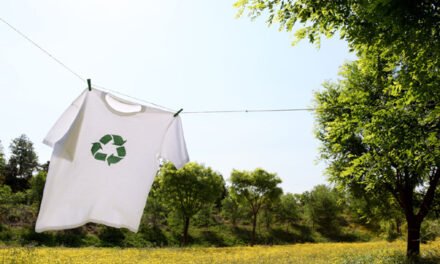 In digital textile printing, the negotiation of ink prices is in the spotlight of many customers. As this consumable represents a significant part of the variable production costs in textile printing, it also has a relevant impact on the customers’ business models. Ink prices, especially for reactive inks, have fallen sharply in recent years but have reached rock-bottom levels in 2019. Without compromising the quality level of the inks (color strengths, dye quality, etc.), market experts do expect stabilization of the current ink price levels.
In digital textile printing, the negotiation of ink prices is in the spotlight of many customers. As this consumable represents a significant part of the variable production costs in textile printing, it also has a relevant impact on the customers’ business models. Ink prices, especially for reactive inks, have fallen sharply in recent years but have reached rock-bottom levels in 2019. Without compromising the quality level of the inks (color strengths, dye quality, etc.), market experts do expect stabilization of the current ink price levels.
To optimize production costs, digital textile printing companies are making every effort to keep the ink prices down but do not but enough emphasis on other critical influence factors such as profiles, workflows and color management. Frequently, non-optimized profiles, workflows and color management impact the customers profitability negatively. In many cases, optimized profiles, workflows and color management can cut ink consumption easily more than 10 percent without putting any compromise on image quality or the fastness properties of the product.
Using proper profiles is very important in digital textile printing. In order to create optimized profiles, a deep understanding of materials, pre-treatment, end-customers’ needs, RIP, printing machine characteristics and textile processes is necessary. Especially the understanding of the interdependence between those sub-areas is very important. When creating a profile, there are a variety of parameters that must be considered in order to adjust the quality of the print and ink consumption. For example, in the pre-treatment of goods, a setting for little penetration can be carried out by special adjustments of the recipe. In the RIP, the adjustment of the black build-up is an important setting as well. Attention should also be paid to the exact use of light colors.
Furthermore, proper adjustment of the ink limit and settings for digital pre-treatment should be taken care of. Checking the process parameters such as steaming also influences ink consumption. In textile printing, there are different fabrics, pretreatment methods or temperature settings of dryers strongly impacting the printing process. Therefore, a separate profile for each changing production environment should be created. It usually takes half a day to create one profile. On average, a customer needs four different profiles for an optimized production approach. If the customer plans to change the ink set, a new profile is absolutely necessary. In minimum, two different technical solutions have to be prepared. One designed for maximum ink savings and one for maximum color space. The mentioned basic principles are very important to consider, otherwise, enormous amounts of ink and material – and, thus, profitability – could be wasted.
Following this approach, the investment in good profiles, workflows and professional color management pays off instantly in a production approach that considers all relevant elements of the process: a real pixel-to-output production strategy. The experts of the Durst Textile Application Team are offering consultancy to our customers in this field. Thomas Mauser, Durst Textile Printing Application Specialists with decades of experience in this field, travelled to Asia to help a customer optimizing his printing process in late 2019. Due to various adjustments in the Inedit RIP, particularly regarding black build-up, an ink saving of even up to 60 percent on 160 g cotton knitwear was achieved in this particular case for some color-intensive print jobs. This clearly demonstrates how the potential of digital textile printing can be leveraged by optimized profiles, workflows and color management resulting in highly profitable textile printing businesses of our customers utilizing, e.g., Durst Reactive HDI Ink. The overall value and profitability captured by this approach would not have been possible by simply focusing on the price of the ink itself. Here, the Durst pixel-to-output approach makes the difference.





















